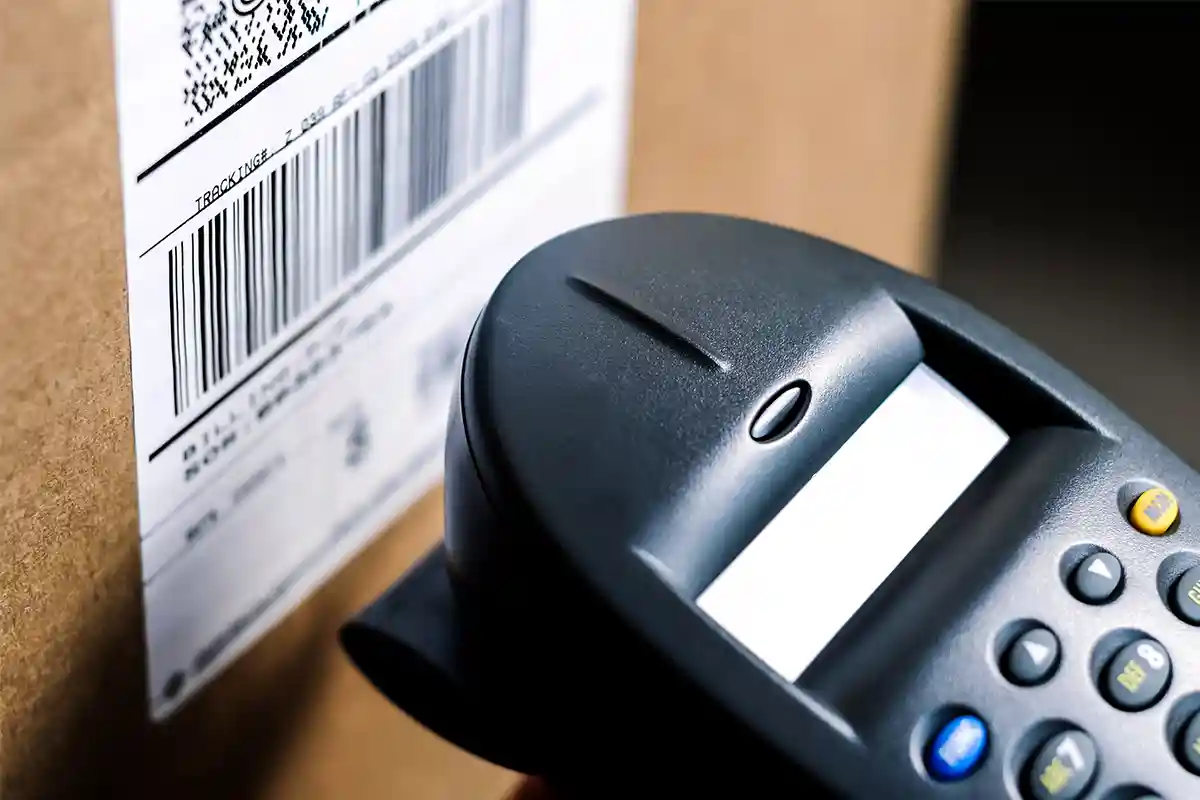Valuable Support
Nowadays, a successful field management increasingly depends on meaningful, quickly available and reliable data. Mobile data acquisition using barcodes can provide valuable support here.
by Marc Teuber
book1502 words timelapse8 minutes reading time
Mobile Device Scanners & Barcodes in Field Service 🔗︎
In field service, the actual work often takes place outside the company. This poses special challenges for communication and data exchange. In addition, technicians are often distributed over several locations and some service orders are placed with external partners. This increases the need for coordination and control. As a result, the number of processes that need to be linked together increases. Even though tasks can vary from company to company, demands on modern field service management today are more and more rising in addition to traditional tasks. Some examples:
- Evaluating diagnostic data
- Processing customer enquiries
- Scheduling service orders
- Planning technician services
- Planning routes
- Checking contracts and invoices
- Managing stocks in warehouse, at service sites and in service vehicles
- Ensuring compliance with contractual service level agreements (SLA)
- Taking responsibility for the strategic focus of field service organization
If one of the processes or workflows does not run smoothly, this often affects all the others. In order to provide good service in the customer field, as many interrelated processes as possible should be seamlessly linked and automated. Mobile data acquisition (MDE) increasingly becomes the oil in the gearbox. In times when fast communication is a decisive factor in company success, it ensures prompt and reliable data exchange - across company bounderies. As a result, one process or workflow can be smoothly transferred to another. Time-consuming coordination by e-mail or telephone is thus largely eliminated. For example, service technicians and customers can be notified in good time if a deadline is postponed due to a delivery delay.
Mobile data acquisition in field service using barcodes works like oil in a gearbox: It promotes smooth process transitions. Complex coordination along the process chain is eliminated, data reaches its destination quickly and errors are reduced. This is made possible by prompt and reliable data transmission. In addition: Barcode-supported MDE is easy to handle and inexpensive.
Useful with and without FSM software 🔗︎
The tasks mentioned at the beginning can be effectively supported by mobile data acquisition using barcodes. Both companies that do not yet use a special FSM software and those that already use such a software can benefit from this solution. The MDE functionality, which is integrated in many FSM solutions, often contains only basic features. However, external MDE solutions or add-ons usually contain more sophisticated features. For example, input masks can be adapted more individually. Furthermore, an extra MDE solution creates a second communication channel. It increases availability and speed. This makes it easier to meet deadlines within tight service level agreements (SLAs).
Barcodes are better than Manual Data Entry 🔗︎
If there is missing a robust method of mobile data acquisition in field service, data often needs to be recorded manually. As a result, there may be a time delay. Moreover, errors can occur more frequently if data is recorded manually and entered into software subsequently. You can avoid this by using barcodes for transmitting data records. Finally, barcodes can be used to ensure that data is entered automatically and exactly into the fields provided.
Advantages over RFID/IoT 🔗︎
Barcode-based data acquisition is currently facing increasing competition from RFID and IoT. Although using these technologies can be advantageous under certain circumstances, barcodes remain the first choice in many cases. Main advantages compared to other technologies are that they are easier to use and that data collection is much cheaper. In addition, barcodes are widely used and it is very likely that customers and suppliers are familiar with them. In addition, barcodes often provide more reliable results if systematically recording large amounts of data. If reading RFID, there is a risk that data may be recorded incomplete, double or multiple. In addition, RFID-based data reading proves to be rather difficult with objects that are made of metal or contain liquids.
1. Technical Equipment: Check-in and Check-out by Barcode 🔗︎
Technical equipment is one of the most important investments in field service. Tools, machines and equipment in the warehouse must be loaded into service vehicles and quickly transported to the site. They may be deposited there for a period of time. Once they have completed their tasks, they often have to be promptly transported to another site or back to the warehouse. In many cases, the equipment is not only used by service technicians within the company and its branches, but also by external partners. In addition, some companies decide to lend the equipment to third parties, e.g. during periods of low activity. This opens up additional sources of income.
Barcode-supported MDE: Technical Equipment always in View 🔗︎
In order to maintain an overview of the technology state mobile data acquisition via barcode is rather useful here. Thus, it is always obvious who has used a machine or a tool and when, and where the equipment is currently being located. There is no longer any need to search for machines and tools as they won’t get lost or stolen so easily. In addition, employees are encouraged to use the technical equipment more responsibly. The bottom line is that this also extends the service life of machines, tools and other equipment. In addition, their use can be planned more efficiently if there is always up-to-date information about the current availability and its duration. This often leads to a long-term reduction in inventory. Another positive side effect could be that you can negotiate a lower insurance premium if the equipment or part of it has been insured.
2. Information & Offers: Give and create on site 🔗︎
Customers expect their problems to be solved as quickly as possible. Complete quotes and information provided quickly and locally can increase customer loyalty. In some cases, this also determines whether a company gets a service order or not. In case the matter is really urgent, there needs to be a prompt quotation. For example, if a technician discovers during a repair on site that another critical component needs to be replaced, that was not initially planned.
If the data required can be transmitted from the site to the service company by mobile means, information or offers can be provided or prepared more quickly. Technicians, customers and the company itself will benefit equally. Specialists will be able to answer many questions on site due to mobile access to current service company data. For example, the service technician can scan a barcode serial number and thus has access to instructions, 3D models of the component or information on suitable spare parts. Prices and delivery times can also be queried this way.
MDE & Barcodes: Even more Value for Customers 🔗︎
Barcodes can perform even more tasks in field service. By using customer information stored on it (e.g. customer numbers), individual conditions can be taken into account when preparing quotes. These could be, for example, agreed discounts that are to apply above a certain purchase sum or extended guarantees. After scanning the barcode, the information can be retrieved from the ERP system automatically via mobile app and inserted into the quotation form. The quote documents can then be printed out on a mobile printer or transferred directly via e-mail. The technician on site then no longer has to spend time coordinating with the head office by telephone. Moreover, the customer will not have to wait days for documents to be delivered by post.
3. On-site Technical Service: Barcodes and MDE provide valuable Assistance 🔗︎
Besides commissioning, inspection, maintenance and repair work are the most important tasks in field service management. Using mobile data acquisition, technicians and customers will be relieved and can increase their productivity. For example, by scanning a barcode with its serial number, it can be determined whether there is a part still having a warranty or needs to be replaced in the course of a recall campaign. Barcodes can also contain other useful information. For example, a QR code has sufficient memory available for adding a short installation guide. Furthermore, you can link further material such as texts and videos. Data from a barcode attached to a customer machine or system can also provide insights into the maintenance history.
Maintenance and Repairs: Other Application Scenarios for Barcode-supported MDE 🔗︎
In addition, a spare part can be checked on the basis of its barcode to find out whether it is a original. Barcodes are also useful for documenting the installation of several spare parts or components, thus ensuring that they have been installed in the correct order. In some cases, there are very subtle differences between built-in parts that are not visible to the naked eye. Information stored on barcodes can help avoid confusion here. Work completion can also be documented by barcode scan and promptly be transferred to the service company’s ERP database on a mobile basis.
Trigger Service Cases: Customers are scanning a Barcode 🔗︎
In some cases, it is worth giving customers access to a MDE solution. They can, for example, scan the barcode on a broken system, machine or faulty component and thereby transmit the data needed to the service company. In this way, a service order can be initiated.
Field Service Management Software: Advantages & Selection Criteria
The market for technical field service is growing - and also the challenges involved. Field service management software brings work processes together and provides an overview - from making appointments to the successful completion of work. In the following, we are discussing five opportunities of these solutions as well as further selection tips.
5 Ways Digital Logistics improves Business Processes
Digitalization is changing logistics processes. Today, some of these changes have growing importance for small and medium-sized companies (SME). Those dealing with the development in time can realize competitive advantages.

